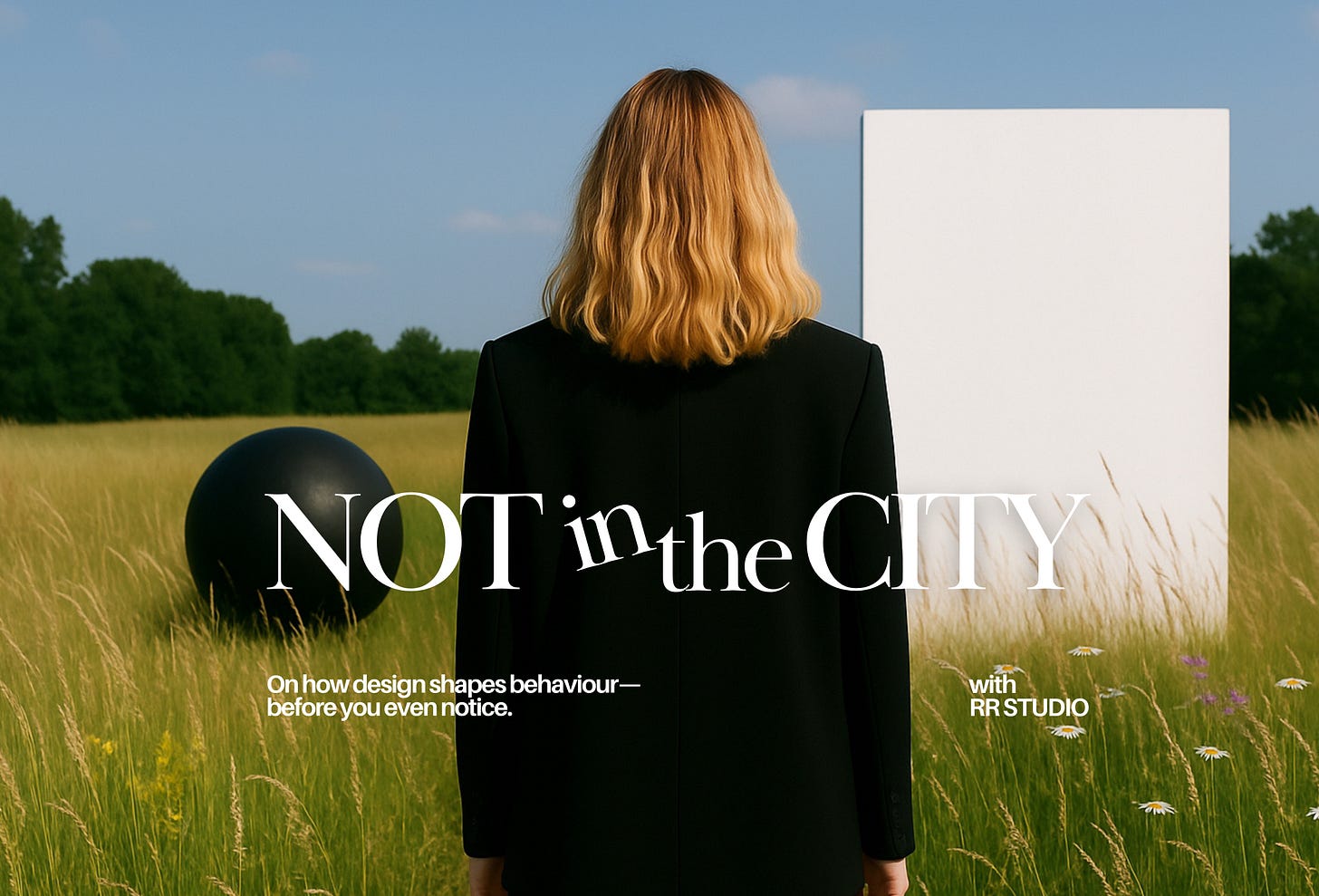The Space Between Us
How Design Shapes Behaviour
I’ve been thinking a lot lately about space.
Not just room to breathe kind of space, but the kind that shapes us before we even realise it.
You walk into a room and your body knows before your brain does—whether to linger or leave, soften or stay alert.
Before a single colour is seen or a piece of furniture clocked, your body’s already reading the cues: distance, scale, layout, thresholds.
Design isn’t just how things look—it’s how they behave.
And how we behave because of them.
It’s why some cafés make you want to stay for hours, while others practically usher you out before your coffee cools.
(Some are literally designed to keep you moving.)
It’s in the way a hallway encourages a child’s sprint, or how a curved bench invites intimacy and conversation.
The rhythm between objects.
The pause they offer.
The invitation they extend.
This is the architecture of behaviour.
And it starts long before you choose a furnishings.
At RR STUDIO, we always begin in plan—with function, flow, form, and feeling.
How someone moves.
Where the light lands.
Where you naturally pause.
Where it feels intuitive to rest.
It’s not about filling a room, it’s about shaping the in-between. The journey. The micro-moments.
Because let’s be real: most people just chase trends, buy a new cushion or throw and hope it magically feels more put together.
(It doesn’t. Unless maybe that cushion is from Wilson & Dorset. A personal fave atm. But still, only if it actually suits the interior and the intent.)
Once that foundation’s clear, then we layer.
Tone, texture, material.
The emotional cues that come through softness, scent, light.
A home that says “rest.”
A salon that says “you’re in good hands.”
A boutique that says “you’re welcome here.”
Because here’s the thing:
Design isn’t passive.
It holds power.
It tells people how to move, what to notice, when to hush, when to exhale.
It can make someone feel small—or seen.
It can signal exclusivity—or extend warmth.
Which is why designing with intention matters.
It’s why we don’t believe in trends for the sake of trends.
(Beige isn’t a concept for example. But “Cocoon” could be.)
We design from the inside out—your values, your rituals, your daily rhythms.
Whether it’s a brand, a dining room, or a full business experience, it’s the story underneath that gives it weight.
And let’s be honest, the spaces that stop you in your tracks?
They’re not always the loudest.
They just know what they’re doing.
So if your space feels a bit off—
if your shop front isn’t landing,
if your brand presence feels slightly hollow—
it’s probably not about the paint colour (though it can be when its just picked, not considered).
It’s about realignment.
Coming back to the feeling you want to create.
And designing everything around that.
Because when a space really works, people don’t just notice.
They respond.
They move differently.
They remember.
They connect.
That’s design doing its job.
Not to impress—but to express.
Not to perform—but to belong.
So next time something feels off—pause.
Step back.
Look at the space between things.
What’s it saying?
Need a second opinion on your shopfront / salon / soul-crushing layout?
We’re open for consults. We don't just decorate—we decode.
RR
—


